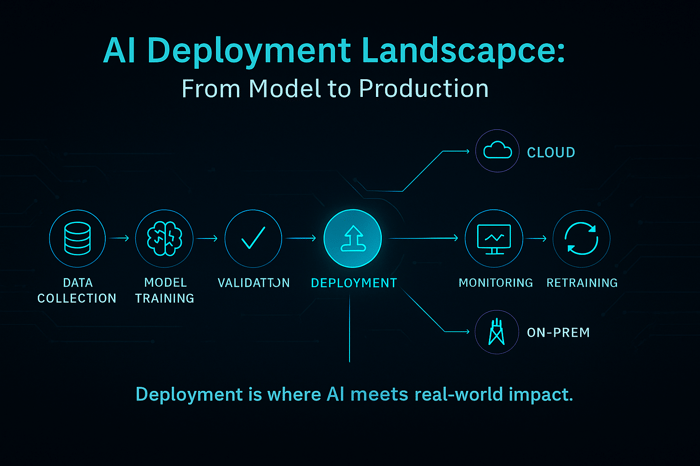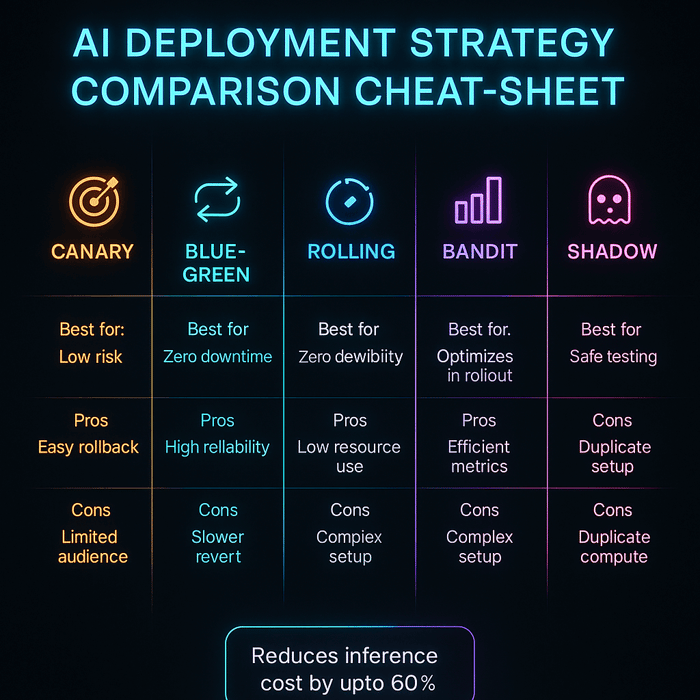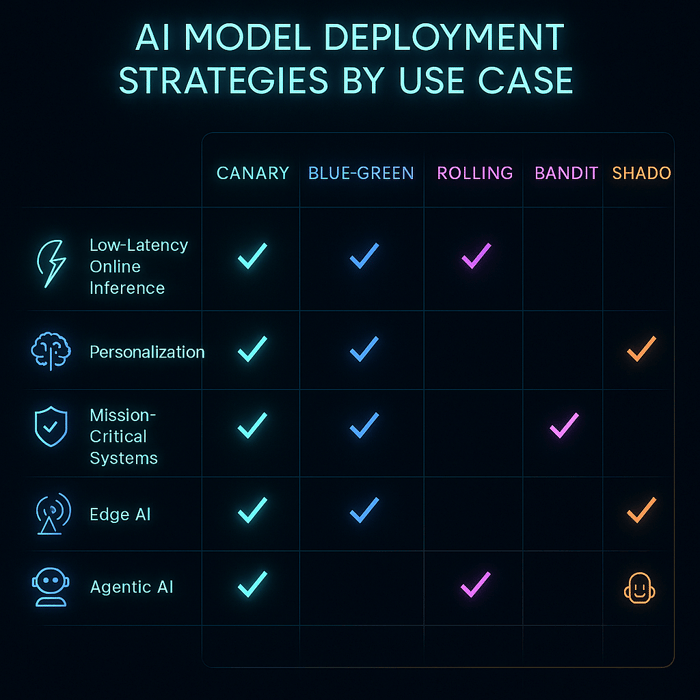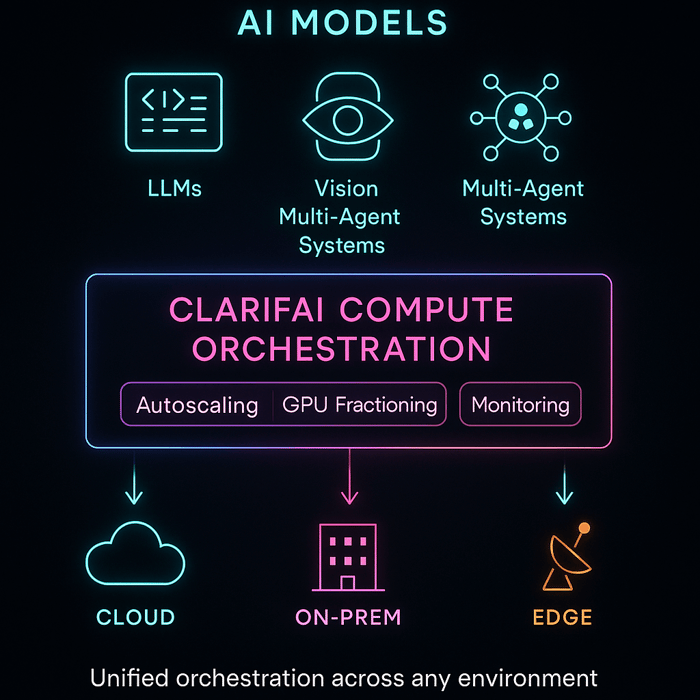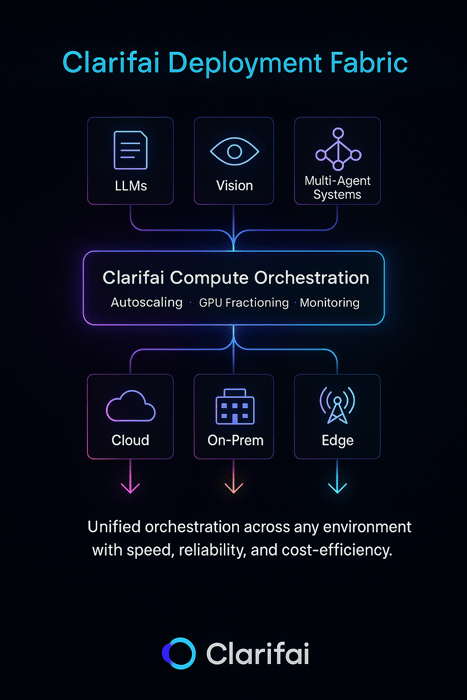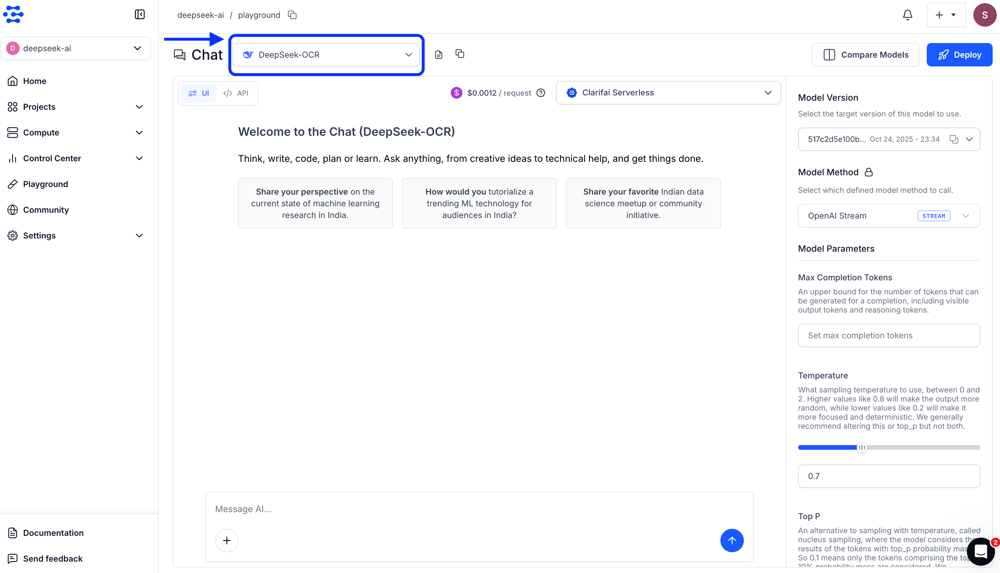Artificial intelligence isn’t just about what models can do—it’s about where they run and how they deliver insights. In the age of connected devices, Edge AI and Cloud AI represent two powerful paradigms for deploying AI workloads, and enterprises are increasingly blending them to optimize latency, privacy, and scale. This guide explores the differences between edge and cloud, examines their benefits and trade‑offs, and provides practical guidance on choosing the right architecture. Along the way, we weave in expert insights, market data, and Clarifai’s compute orchestration solutions to help you make informed decisions.
Quick Digest: What You’ll Learn
- What is Edge AI? You’ll see how AI models running on or near devices enable real‑time decisions, protect sensitive data and reduce bandwidth consumption.
- What is Cloud AI? Understand how centralized cloud platforms deliver powerful training and inference capabilities, enabling large‑scale AI with high compute resources.
- Key differences and trade‑offs between edge and cloud AI, including latency, privacy, scalability, and cost.
- Pros, cons and use cases for both edge and cloud AI across industries—manufacturing, healthcare, retail, autonomous vehicles and more.
- Hybrid AI strategies and emerging trends like 5G, tiny models, and risk frameworks, plus how Clarifai’s compute orchestration and local runners simplify deployment across edge and cloud..
- Expert insights and FAQs to boost your AI deployment decisions.
What Is Edge AI?
Quick summary: How does Edge AI work?
Edge AI refers to running AI models locally on devices or near the data source—for example, a smart camera performing object detection or a drone making navigation decisions without sending data to a remote server. Edge devices process data in real time, often using specialized chips or lightweight neural networks, and only send relevant insights back to the cloud when necessary. This eliminates dependency on internet connectivity and drastically reduces latency.
Deeper dive
At its core, edge AI moves computation from centralized data centers to the “edge” of the network. Here’s why companies choose edge deployments:
- Low latency – Because inference occurs close to the sensor, decisions can be made in milliseconds. OTAVA notes that cloud processing often takes 1–2 s, whereas edge inference happens in hundreds of milliseconds. In safety‑critical applications like autonomous vehicles or industrial robotics, sub‑50 ms response times are required.
- Data privacy and security – Sensitive data stays local, reducing the attack surface and complying with data sovereignty regulations. A recent survey found that 91 % of companies see local processing as a competitive advantage.
- Reduced bandwidth and offline resilience – Sending large video or sensor feeds to the cloud is expensive; edge AI transmits only essential insights. In remote areas or during network outages, devices continue operating autonomously.
- Cost efficiency – Edge processing lowers cloud storage, bandwidth and energy expenses. OnLogic notes that moving workloads from cloud to local hardware can dramatically reduce operational costs and offer predictable hardware expenses.
These benefits explain why 97 % of CIOs have already deployed or plan to deploy edge AI, according to a recent industry survey.
Expert insights & tips
- Local doesn’t mean small. Modern edge chips like Snapdragon Ride Flex deliver over 150 TOPS (trillions of operations per second) locally, enabling complex tasks such as vision and sensor fusion in vehicles.
- Pruning and quantization dramatically shrink large models, making them efficient enough to run on edge devices. Developers should adopt model compression and distillation to balance accuracy and performance.
- 5G is a catalyst – With <10 ms latency and energy savings of 30–40 %, 5G networks enable real‑time edge AI across smart cities and industrial IoT.
- Decentralized storage – On‑device vector databases let retailers deploy recommendation models without sending customer data to a central server.
Creative example
Imagine a smart camera in a factory that can instantly detect a defective product on the conveyor belt and stop the line. If it relied on a remote server, network delays could result in wasted materials. Edge AI ensures the decision happens in microseconds, preventing expensive product defects.
What Is Cloud AI?
Quick summary: How does Cloud AI work?
Cloud AI refers to running AI workloads on centralized servers hosted by cloud providers. Data is sent to these servers, where high‑end GPUs or TPUs train and run models. The results are then returned via the network. Cloud AI excels at large‑scale training and inference, offering elastic compute resources and easier maintenance.
Deeper dive
Key characteristics of cloud AI include:
- Scalability and compute power – Public clouds offer access to virtually unlimited computing resources. For instance, Fortune Business Insights estimates the global cloud AI market will grow from $78.36 billion in 2024 to $589.22 billion by 2032, reflecting widespread adoption of cloud‑hosted AI.
- Unified model training – Training large generative models requires enormous GPU clusters. OTAVA notes that the cloud remains essential for training deep neural networks and orchestrating updates across distributed devices.
- Simplified management and collaboration – Centralized models can be updated without physically accessing devices, enabling rapid iteration and global deployment. Data scientists also benefit from shared resources and version control.
- Cost considerations – While the cloud allows pay‑as‑you‑go pricing, sustained usage can be expensive. Many companies explore edge AI to cut cloud bills by 30–40 %.
Expert insights & tips
- Use the cloud for training, then deploy at the edge – Train models on rich datasets in the cloud and periodically update edge deployments. This hybrid approach balances accuracy and responsiveness.
- Leverage serverless inference when traffic is unpredictable. Many cloud providers offer AI as a service, allowing dynamic scaling without managing infrastructure.
- Secure your APIs – Cloud services can be vulnerable; in 2023, a major GPU provider discovered vulnerabilities that allowed unauthorized code execution. Implement strong authentication and continuous security monitoring.
Creative example
A retailer might run a massive recommendation engine in the cloud, training it on millions of purchase histories. Each store then downloads a lightweight model optimized for its local inventory, while the central model continues learning from aggregated data and pushing improvements back to the edge.

Edge vs Cloud AI: Key Differences
Quick summary: How do Edge and Cloud AI compare?
Edge and cloud AI differ primarily in where data is processed and how quickly insights are delivered. The edge runs models on local devices for low latency and privacy, while the cloud centralizes computation for scalability and collaborative training. A hybrid architecture combines both to optimize performance.
Head‑to‑head comparison
|
Feature |
Edge AI |
Cloud AI |
|
Processing location |
On-device or near‑device (gateways, sensors) |
Centralized data centers |
|
Latency |
Milliseconds; ideal for real‑time control |
Seconds; dependent on network |
|
Data privacy |
High—data stays local |
Lower—data transmitted to the cloud |
|
Bandwidth & connectivity |
Minimal; can operate offline |
Requires stable internet |
|
Scalability |
Limited by device resources |
Virtually unlimited compute and storage |
|
Cost model |
Upfront hardware cost; lower operational expenses |
Pay‑as‑you‑go but can become expensive over time |
|
Use cases |
Real‑time control, IoT, AR/VR, autonomous vehicles |
Model training, large-scale analytics, generative AI |
Expert insights & tips
- Data volume matters – High‑bandwidth workloads like 4K video benefit greatly from edge processing to avoid network congestion. Conversely, text‑heavy tasks can be processed in the cloud with minimal delays.
- Consider regulatory requirements – Industries such as healthcare and finance often require patient or client data to remain on‑premises. Edge AI helps meet these mandates.
- Balance lifecycle management – Cloud AI simplifies model updates, but version control across thousands of edge devices can be challenging. Use orchestration tools (like Clarifai’s) to roll out updates consistently.
Creative example
In a smart city, traffic cameras use edge AI to count vehicles and detect incidents. Aggregated counts are sent to a cloud AI platform that uses historical data and weather forecasts to optimize traffic lights across the city. This hybrid approach ensures both real‑time response and long‑term planning.

Benefits of Edge AI
Quick summary: Why choose Edge AI?
Edge AI delivers ultra‑low latency, enhanced privacy, reduced network dependency and cost savings. It’s ideal for scenarios where rapid decision‑making, data sovereignty or unreliable connectivity are critical..
In-depth benefits
- Real‑time responsiveness – Industrial robots, self‑driving cars and medical devices require decisions faster than network round‑trip times. Qualcomm’s ride‑flex SoCs deliver sub‑50 ms response times. This instantaneous processing prevents accidents and improves safety.
- Data privacy and compliance – Keeping data local minimizes exposure. This is crucial in healthcare (protected health information), financial services (transaction data), and retail (customer purchase history). Surveys show that 53 % of companies adopt edge AI specifically for privacy and security.
- Bandwidth savings – Streaming high‑resolution video consumes enormous bandwidth. By processing frames on the edge and sending only relevant metadata, organizations reduce network traffic by up to 80 %.
- Reduced cloud costs – Edge deployments lower cloud inference bills by 30–40 %. OnLogic highlights that customizing edge hardware results in predictable costs and avoids vendor lock‑in.
- Offline and remote capabilities – Edge devices continue operating during network outages or in remote locations. Brim Labs notes that edge AI supports rural healthcare and agriculture by processing locally.
- Enhanced security – Each device acts as an isolated environment, limiting the blast radius of cyberattacks. Local data reduces exposure to breaches like the cloud vulnerability discovered in a major GPU provider.
Expert insights & tips
- Don’t neglect power consumption. Edge hardware must operate under tight energy budgets, especially for battery‑powered devices. Efficient model architectures (TinyML, SqueezeNet) and hardware accelerators are essential.
- Adopt federated learning – Train models on local data and aggregate only the weights or gradients to the cloud. This approach preserves privacy while leveraging distributed datasets.
- Monitor drift – Edge models can degrade over time due to changing environments. Use cloud analytics to monitor performance and trigger re‑training.
Creative example
An agritech startup deploys edge AI sensors across remote farms. Each sensor analyses soil moisture and weather conditions in real time. When a pump needs activation, the device triggers irrigation locally without waiting for central approval, ensuring crops aren’t stressed during network downtime.
Benefits of Cloud AI
Quick summary: Why choose Cloud AI?
Cloud AI excels at scalability, high compute performance, centralized management and rapid innovation. It’s ideal for training large models, global analytics and orchestrating updates across distributed systems.
In‑depth benefits
- Unlimited compute power – Public clouds provide access to GPU clusters needed for complex generative models. This scalability allows companies of all sizes to train sophisticated AI without upfront hardware costs.
- Centralized datasets and collaboration – Data scientists can access vast datasets stored in the cloud, accelerating R&D and enabling cross‑team experimentation. Cloud platforms also integrate with data lakes and MLOps tools.
- Rapid model updates – Centralized deployment means bug fixes and improvements reach all users immediately. This is critical for LLMs and generative AI models that evolve quickly.
- Elastic cost management – Cloud services offer pay‑as‑you‑go pricing. When workloads spike, extra resources are provisioned automatically; when demand falls, costs decrease. Fortune Business Insights projects the cloud AI market will surge at a 28.5 % CAGR, reflecting this flexible consumption model.
- AI ecosystem – Cloud providers offer pre‑trained models, API endpoints, and integration with data pipelines, accelerating time to market for AI projects.
Expert insights & tips:
- Use specialized training hardware – Leverage next‑gen cloud GPUs or TPUs for faster model training, especially for vision and language models.
- Plan for vendor diversity – Avoid lock‑in by adopting orchestration platforms that can route workloads across multiple clouds and on‑premises clusters.
- Implement robust governance – Cloud AI must adhere to frameworks like NIST’s AI Risk Management Framework, which offers guidelines for managing AI risks and improving trustworthiness. The EU AI Act also establishes risk tiers and compliance requirements.
Creative example
A biotech firm uses the cloud to train a protein‑folding model on petabytes of genomic data. The resulting model helps researchers understand complex disease mechanisms. Because the data is centralized, scientists across the globe collaborate seamlessly on the same datasets without shipping data to local clusters.
Challenges and Trade‑Offs
Quick summary: What are the limitations of Edge and Cloud AI?
While edge and cloud AI offer significant advantages, both have limitations. Edge AI faces limited compute and battery constraints, while cloud AI contends with latency, privacy concerns and escalating costs. Navigating these trade‑offs is essential for enterprise success.
Key challenges at the edge
- Hardware constraints – Small devices have limited memory and processing power. Running large models can quickly exhaust resources, leading to performance bottlenecks.
- Model management complexity – Keeping hundreds or thousands of edge devices updated with the latest models and security patches is non‑trivial. Without orchestration tools, version drift can lead to inconsistent behavior.
- Security vulnerabilities – IoT devices may have weak security controls, making them targets for attacks. Edge AI must be hardened and monitored to prevent unauthorized access.
Key challenges in the cloud
- Latency and bandwidth – Round‑trip times, especially when transmitting high‑resolution sensor data, can hinder real‑time applications. Network outages halt inference completely.
- Data privacy and regulatory issues – Sensitive data leaving the premises may violate privacy laws. The EU AI Act, for example, imposes strict obligations on high‑risk AI systems.
- Rising costs – Sustained cloud AI usage can be expensive. Cloud bills often grow unpredictably as model sizes and usage increase, driving many organizations to explore edge alternatives.
Expert insights & tips
- Embrace hybrid orchestration – Use orchestration platforms that seamlessly distribute workloads across edge and cloud environments to optimize for cost, latency and compliance.
- Plan for sustainability – AI compute demands significant energy. Prioritize energy‑efficient hardware, such as edge SoCs and next‑gen GPUs, and adopt green compute strategies.
- Evaluate risk frameworks – Adopt NIST’s AI RMF and monitor emerging regulations like the EU AI Act to ensure compliance. Conduct risk assessments and impact analyses during AI development.
Creative example
A hospital deploys AI for patient monitoring. On‑premises devices detect anomalies like irregular heartbeats in real time, while cloud AI analyzes aggregated data to refine predictive models. This hybrid setup balances privacy and real‑time intervention but requires careful coordination to keep models synchronized and ensure regulatory compliance.
When to Use Edge vs Cloud vs Hybrid AI
Quick summary: Which architecture is right for you?
The choice depends on latency requirements, data sensitivity, connectivity, cost constraints and regulatory context. In many cases, the optimal solution is a hybrid architecture that uses the cloud for training and coordination and the edge for real‑time inference.
Decision framework
- Latency & time sensitivity – Choose edge AI if microsecond or millisecond decisions are critical (e.g., autonomous vehicles, robotics). Cloud AI suffices for batch analytics and non‑urgent predictions.
- Data privacy & sovereignty – Opt for edge when data cannot leave the premises. Hybrid strategies with federated learning help maintain privacy while leveraging centralized learning.
- Compute & energy resources – Cloud AI provides elastic compute for training. Edge devices must balance performance and power consumption. Consider specialized hardware like NVIDIA’s IGX Orin or Qualcomm’s Snapdragon Ride for high‑performance edge inference.
- Network reliability & bandwidth – In remote or bandwidth‑constrained environments, edge AI ensures continuous operation. Urban areas with robust connectivity can leverage cloud resources more heavily.
- Cost optimization – Hybrid strategies often minimize total cost of ownership. Edge reduces recurring cloud fees, while cloud reduces hardware CapEx by providing infrastructure on demand.
Expert insights & tips
- Start hybrid – Train in the cloud, deploy at the edge and periodically synchronize. OTAVA advocates this approach, noting that edge AI complements cloud for governance and scaling.
- Implement feedback loops – Collect edge data and send summaries to the cloud for model improvement. Over time, this feedback enhances accuracy and keeps models aligned.
- Ensure interoperability – Adopt open standards for data formats and APIs to ease integration across devices and clouds. Use orchestration platforms that support heterogeneous hardware.
Creative example
Smart retail systems use edge cameras to track customer foot traffic and shelf interactions. The store’s cloud platform aggregates patterns across locations, predicts product demand and pushes restocking recommendations back to individual stores. This synergy improves operational efficiency and customer experience.

Emerging Trends & the Future of Edge and Cloud AI
Quick summary: What new developments are shaping AI deployment?
Emerging trends include edge LLMs, tiny models, 5G, specialized chips, quantum computing and increasing regulatory scrutiny. These innovations will broaden AI adoption while challenging companies to manage complexity.
Notable trends
- Edge Large Language Models (LLMs) – Advances in model compression allow LLMs to run locally. Examples include MIT’s TinyChat and NVIDIA’s IGX Orin, which run generative models on edge servers. Smaller models (SLMs) enable on‑device conversational experiences.
- TinyML and TinyAGI – Researchers are developing tiny yet powerful models for low‑power devices. These models use techniques like pruning, quantization and distillation to shrink parameters without sacrificing accuracy.
- Specialized chips – Edge accelerators like Google’s Edge TPU, Apple’s Neural Engine and NVIDIA Jetson are proliferating. According to Imagimob’s CTO, new edge hardware offers up to 500× performance gains over prior generations.
- 5G and beyond – With <10 ms latency and energy efficiency, 5G is transforming IoT. Combined with mobile edge computing (MEC), it enables distributed AI across smart cities and industrial automation.
- Quantum edge computing – Though nascent, quantum processors promise exponential speedups for certain tasks. OTAVA forecasts advancements like quantum edge chips in the coming years.
- Regulation & ethics – Frameworks such as NIST’s AI RMF and the EU AI Act define risk tiers, transparency obligations and prohibited practices. Enterprises must align with these regulations to mitigate risk and build trust.
- Sustainability – With AI’s growing carbon footprint, there’s a push toward energy‑efficient architectures and renewable data centers. Hybrid deployments reduce network usage and associated emissions.
Expert insights & tips
- Experiment with multimodal AI – According to ZEDEDA’s survey, 60 % of respondents adopt multimodal AI at the edge, combining vision, audio and text for richer insights.
- Prioritize explainability – Regulators may require explanations for AI decisions. Build interpretable models or deploy explainability tools at both the edge and cloud.
- Invest in people – The OTAVA report warns of skill gaps; upskilling teams in AI/ML, edge hardware and security is critical.
Creative example
Imagine a future where wearables run personalized LLMs that coach users through their daily tasks, while the cloud trains new behavioral patterns from anonymized data. Such a setup would blend personal privacy with collective intelligence.

Enterprise Use Cases of Edge and Cloud AI
Quick summary: Where are businesses using Edge and Cloud AI?
AI is transforming industries from manufacturing and healthcare to retail and transportation. Enterprises are adopting edge, cloud and hybrid solutions to enhance efficiency, safety and customer experiences.
Manufacturing
- Predictive maintenance – Edge sensors monitor machinery, predict failures and schedule repairs before breakdowns. OTAVA reports a 25 % reduction in downtime when combining edge AI with cloud analytics.
- Quality inspection – Computer vision models run on cameras to detect defects in real time. If anomalies occur, data is sent to cloud systems to retrain models.
- Robotics and automation – Edge AI drives autonomous robots that coordinate with centralized systems. Qualcomm’s Ride Flex chips enable quick perception and decision-making.
Healthcare
- Remote monitoring – Wearables and bedside devices analyze vital signs locally, sending alerts when thresholds are crossed. This reduces network load and protects patient data.
- Medical imaging – Edge GPUs accelerate MRI or CT scan analysis, while cloud clusters handle large-scale training on anonymized datasets.
- Drug discovery – Cloud AI processes massive molecular datasets to accelerate discovery of novel compounds.
Retail
- Smart shelving and in‑store analytics – Cameras and sensors measure shelf stock and foot traffic. ObjectBox reports that more than 10 % sales increases are achievable through in‑store analytics, and that hybrid setups may save retailers $3.6 million per store annually.
- Contactless checkout – Edge devices implement computer vision to track items and bill customers automatically. Data is aggregated in the cloud for inventory management.
- Personalized recommendations – On‑device models deliver suggestions based on local behavior, while cloud models analyze global trends.
Transportation & Smart Cities
- Autonomous vehicles – Edge AI interprets sensor data for lane keeping, obstacle avoidance and navigation. Cloud AI updates high‑definition maps and learns from fleet data..
- Traffic management – Edge sensors count vehicles and detect accidents, while cloud systems optimize traffic flows across the entire network.
Expert insights & tips
- Adoption is growing fast – ZEDEDA’s survey notes that 97 % of CIOs have deployed or plan to deploy edge AI, with 60 % leveraging multimodal AI.
- Don’t overlook supply chains – Edge AI can predict demand and optimize logistics. In retail, 78 % of stores plan hybrid setups by 2026.
- Monitor ROI – Use metrics like downtime reduction, sales uplift and cost savings to justify investments.
Creative example
At a distribution center, robots equipped with edge AI navigate aisles, pick orders and avoid collisions. Cloud dashboards track throughput and suggest improvements, while federated learning ensures each robot benefits from the collective experience without sharing raw data.

Clarifai Solutions for Edge and Cloud AI
Quick summary: How does Clarifai support hybrid AI deployment?
Clarifai offers compute orchestration, model inference and local runners that simplify deploying AI models across cloud, on‑premises and edge environments. These tools help optimize costs, ensure security and improve scalability.
Compute Orchestration
Clarifai’s compute orchestration provides a unified control plane for deploying any model on any hardware—cloud, on‑prem or air‑gapped environments. It uses GPU fractioning, autoscaling and dynamic scheduling to reduce compute requirements by up to 90 % and handle 1.6 million inference requests per second. By avoiding vendor lock‑in, enterprises can route workloads to the most cost‑effective or compliant infrastructure.
Model Inference
With Clarifai’s inference platform, organizations can make prediction calls efficiently across clusters and node pools. Compute resources scale automatically based on demand, ensuring consistent performance. Customers control deployment endpoints, which means they decide whether inference happens in the cloud or on edge hardware.
Local Runners
Clarifai’s local runners allow you to run and test models on local hardware while exposing them via Clarifai’s API, ensuring secure development and offline processing. Local runners seamlessly integrate with compute orchestration, making it easy to deploy the same model on a laptop, a private server or an edge device with no code changes.
Integrated Benefits
- Cost optimization – By combining local processing with dynamic cloud scaling, Clarifai customers can reduce compute spend by over 70 %.
- Security and compliance – Models can be deployed in air‑gapped environments and controlled to meet regulatory requirements. Local runners ensure that sensitive data never leaves the device.
- Flexibility – Teams can train models in the cloud, deploy them at the edge and monitor performance across all environments from a single dashboard.
Creative example
An insurance company deploys Clarifai’s compute orchestration to run vehicle damage assessment models. In remote regions, local runners analyze photos on a claims agent’s tablet, while in urban areas, the same model runs on cloud clusters for rapid batch processing. This setup reduces costs and speeds up claims approvals.
Frequently Asked Questions
How does edge AI improve data privacy?
Edge AI processes data locally, so raw data doesn’t leave the device. Only aggregated insights or model updates are transmitted to the cloud. This reduces exposure to breaches and supports compliance with regulations like HIPAA and the EU AI Act.
Is edge AI more expensive than cloud AI?
Edge AI requires upfront investment in specialized hardware, but it reduces long‑term cloud costs. OTAVA reports cost savings of 30–40 % when offloading inference to the edge. Cloud AI charges based on usage; for heavy workloads, costs can accumulate quickly.
Which industries benefit most from edge AI?
Industries with real‑time or sensitive applications—manufacturing, healthcare, autonomous vehicles, retail and agriculture—benefit greatly. These sectors gain from low latency, privacy and offline capabilities.
What is hybrid AI?
Hybrid AI refers to combining cloud and edge AI. Models are trained in the cloud, deployed at the edge and continuously improved through feedback loops. This approach maximizes performance while managing cost and compliance.
How can Clarifai help implement edge and cloud AI?
Clarifai’s compute orchestration, local runners and model inference provide an end‑to‑end platform for deploying AI across any environment. These tools optimize compute usage, ensure security and enable enterprises to harness both edge and cloud AI benefits.
Conclusion: Building a Resilient AI Future
The debate between edge and cloud AI isn’t a matter of one replacing the other—it’s about finding the right balance. Edge AI empowers devices with lightning‑fast responses and privacy‑preserving intelligence, while cloud AI supplies the muscle for training, large‑scale analytics and global collaboration. Hybrid architectures that blend edge and cloud will define the next decade of AI innovation, enabling enterprises to deliver immersive experiences, optimize operations and meet regulatory demands. As you embark on this journey, leverage platforms like Clarifai’s compute orchestration and local runners to simplify deployment, control costs and accelerate time to value. Stay informed about emerging trends, invest in skill development, and design AI systems that respect users, regulators and our planet.



 Algorithmic Bias & Discrimination
Algorithmic Bias & Discrimination











